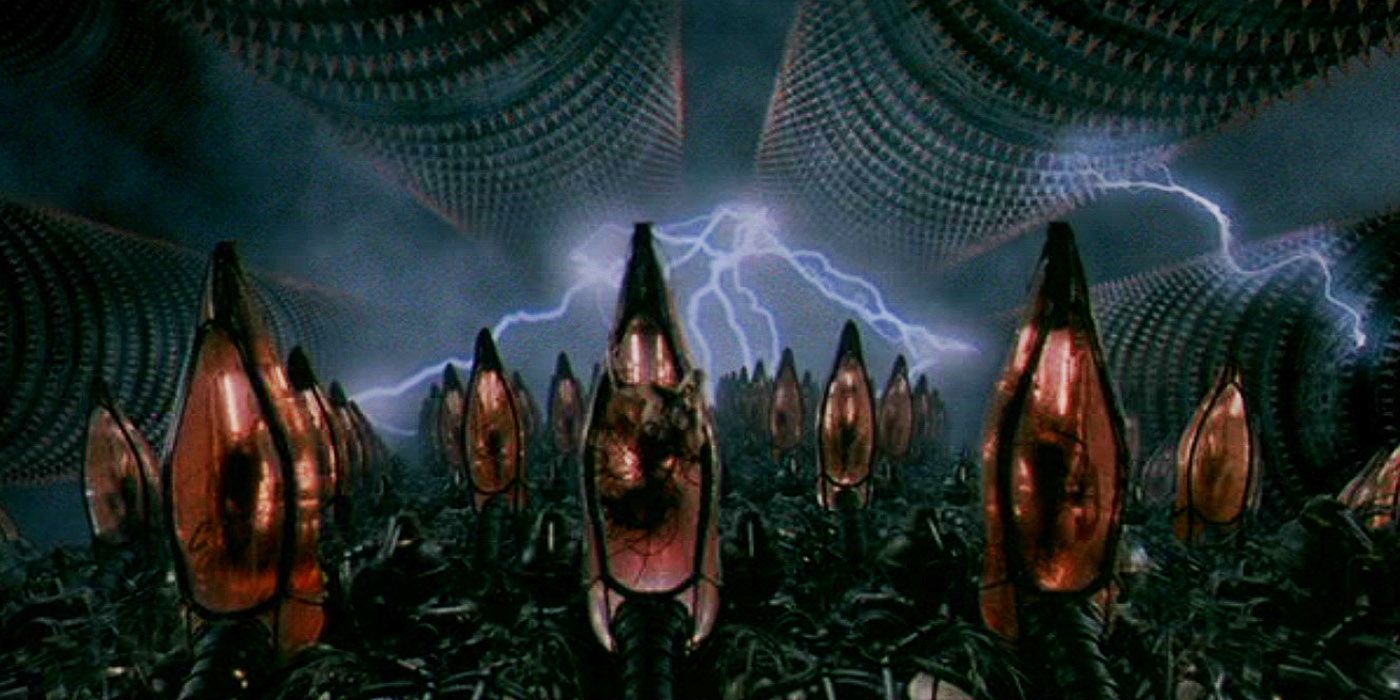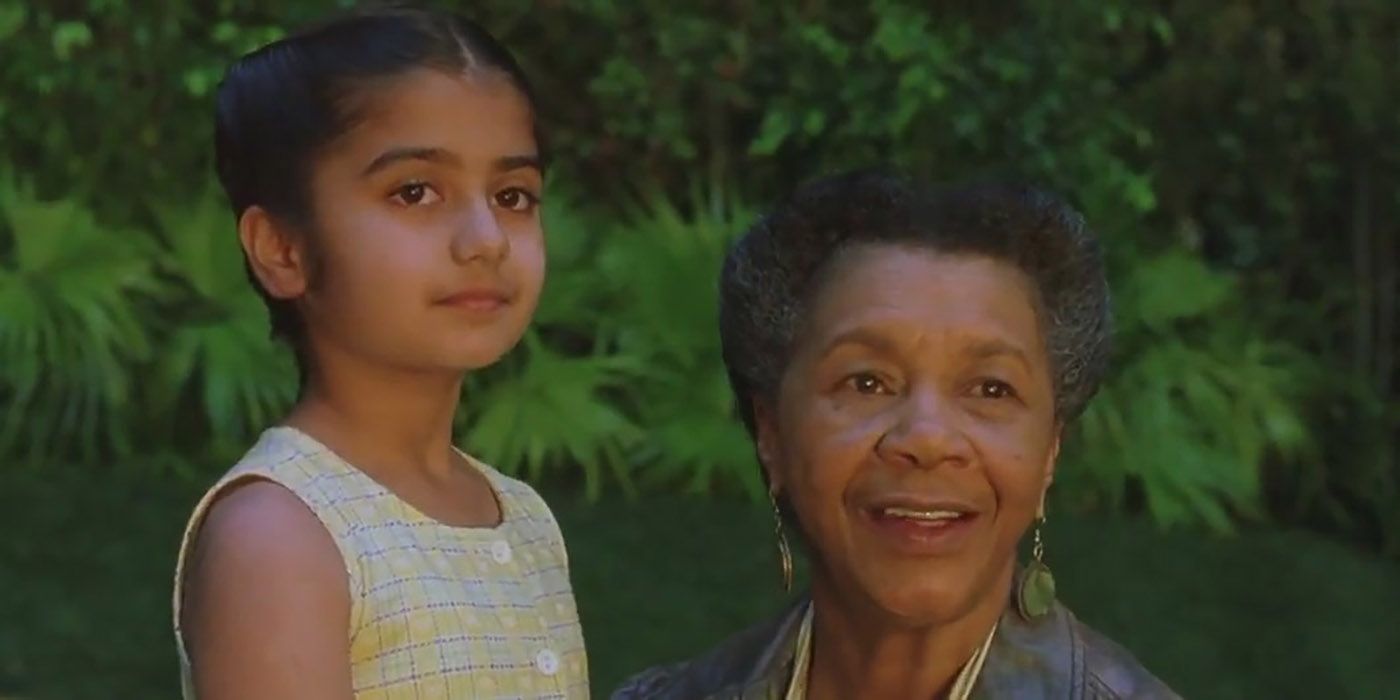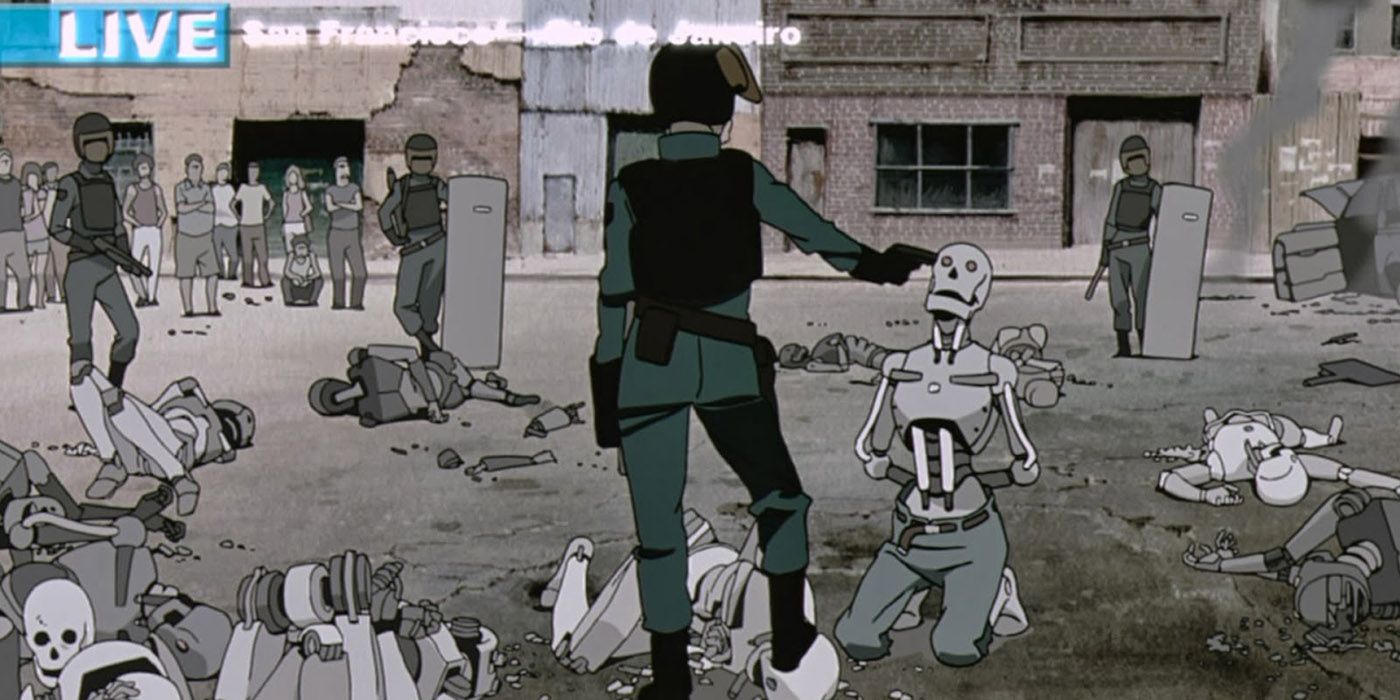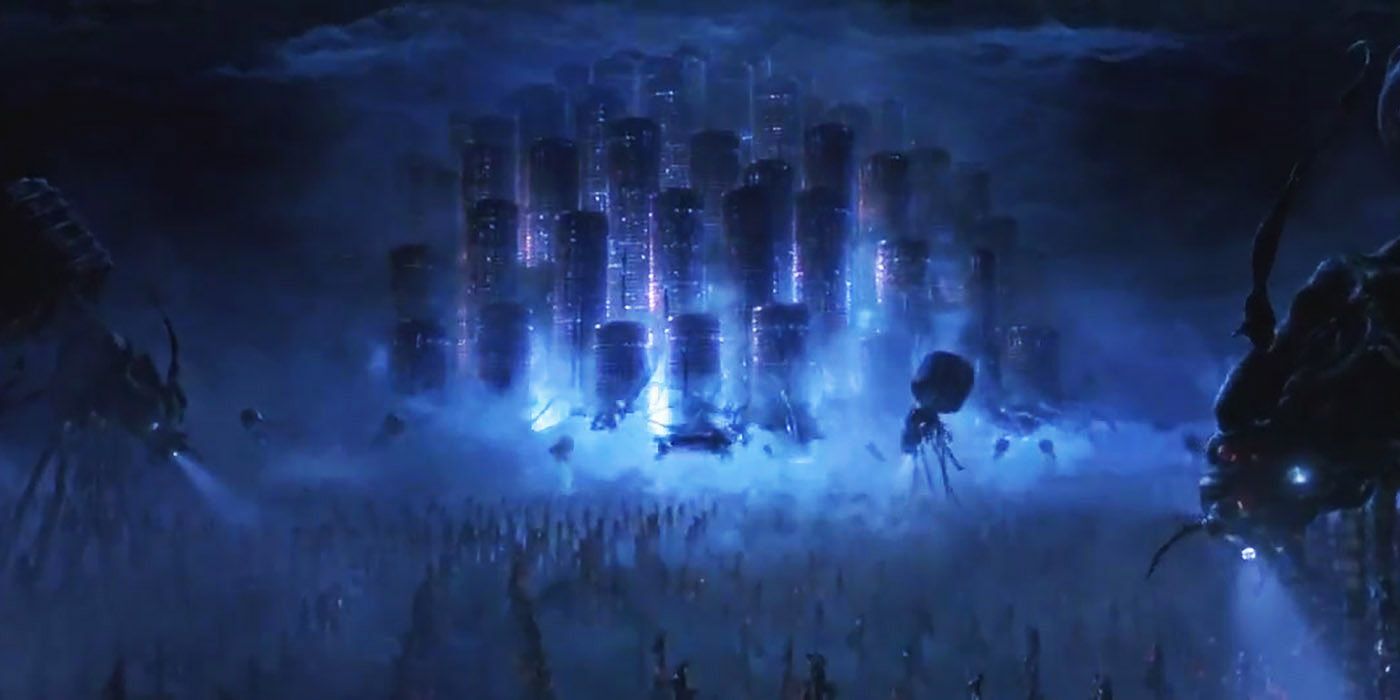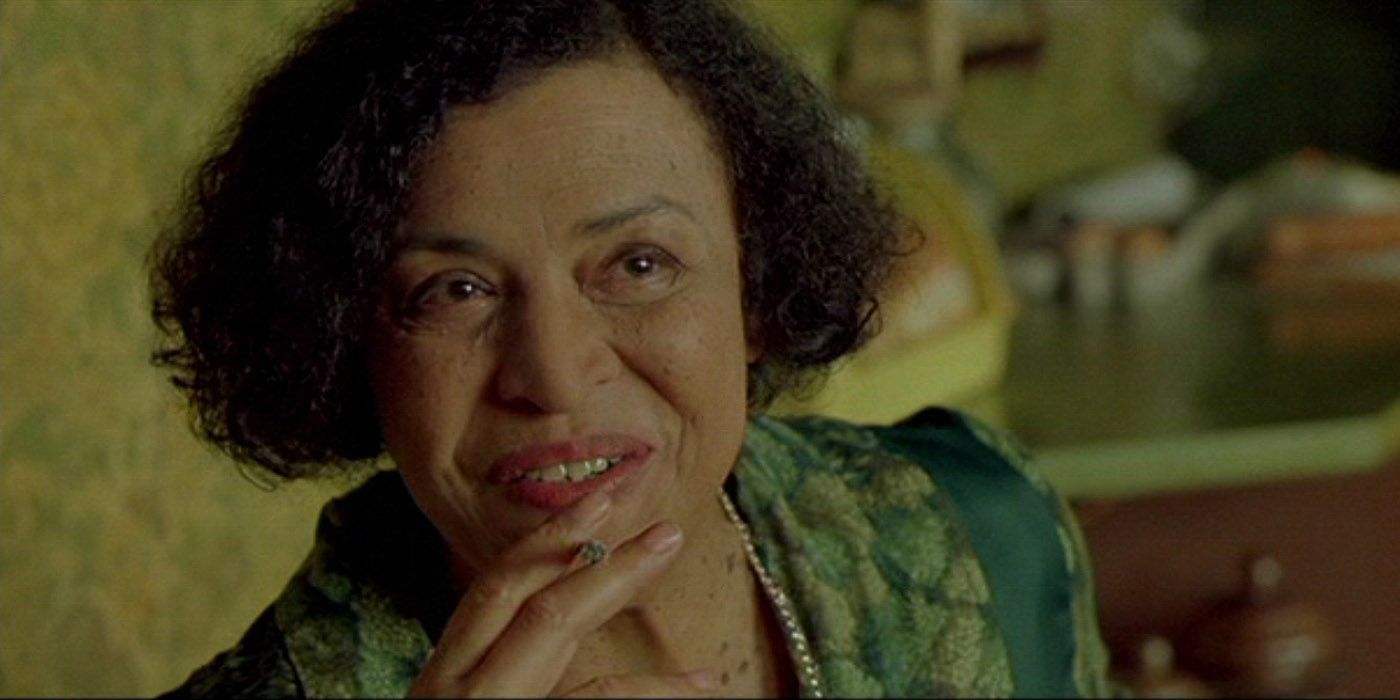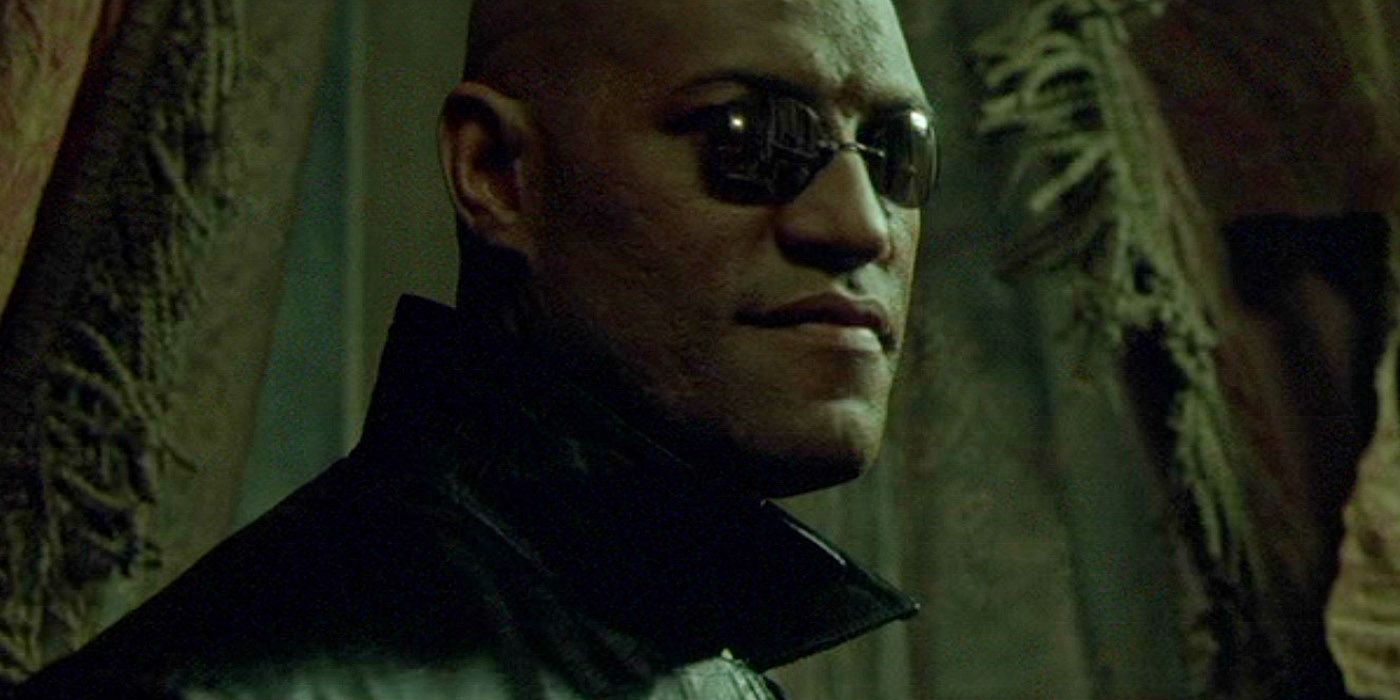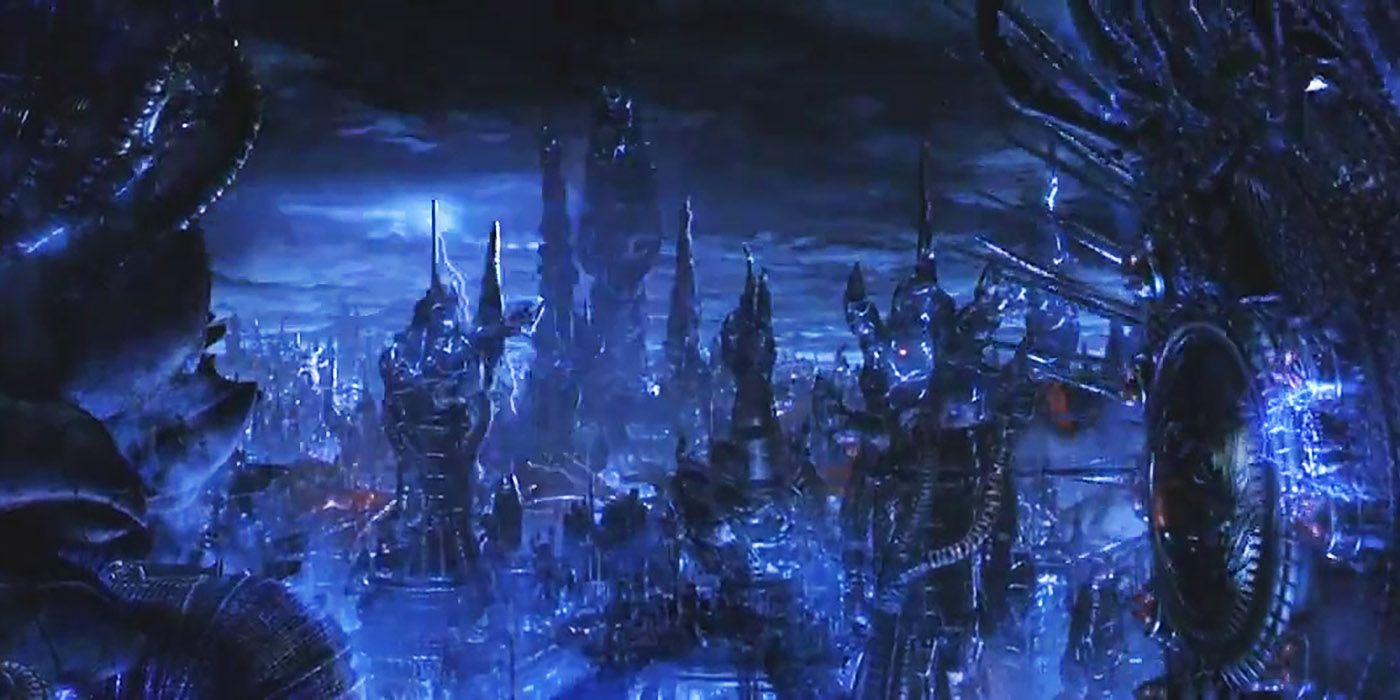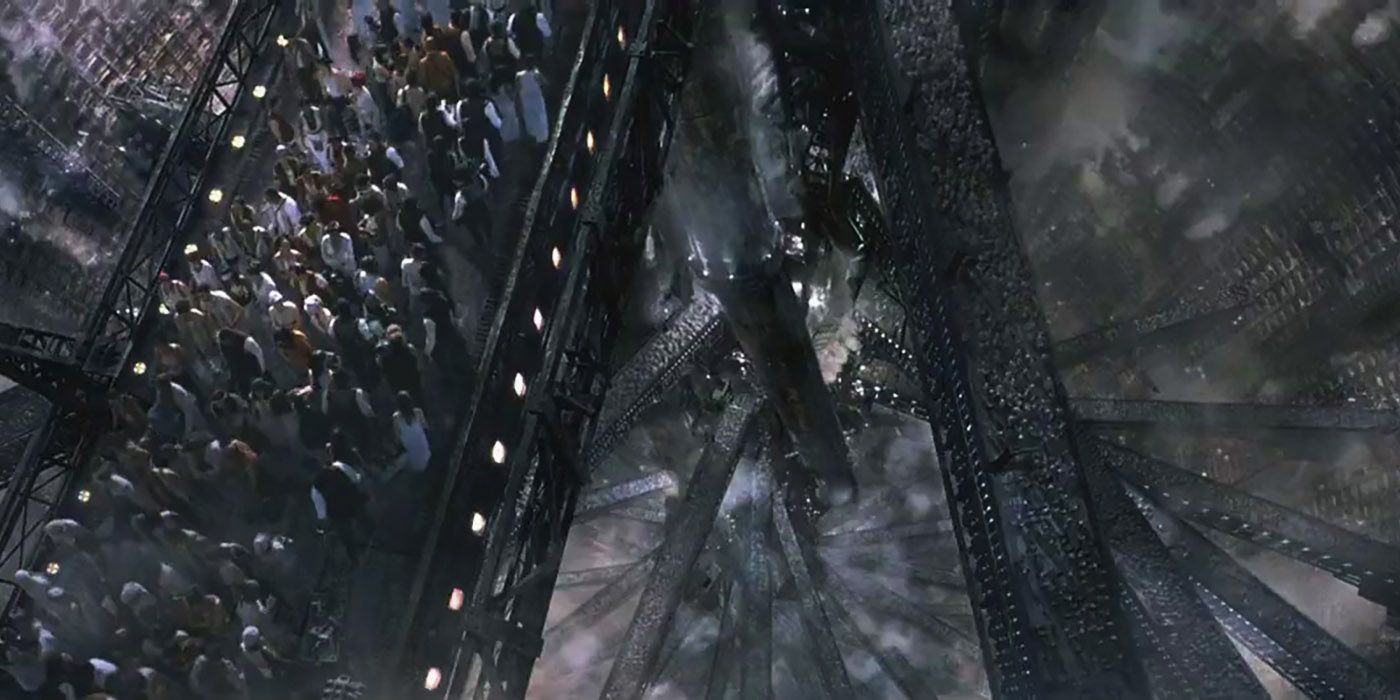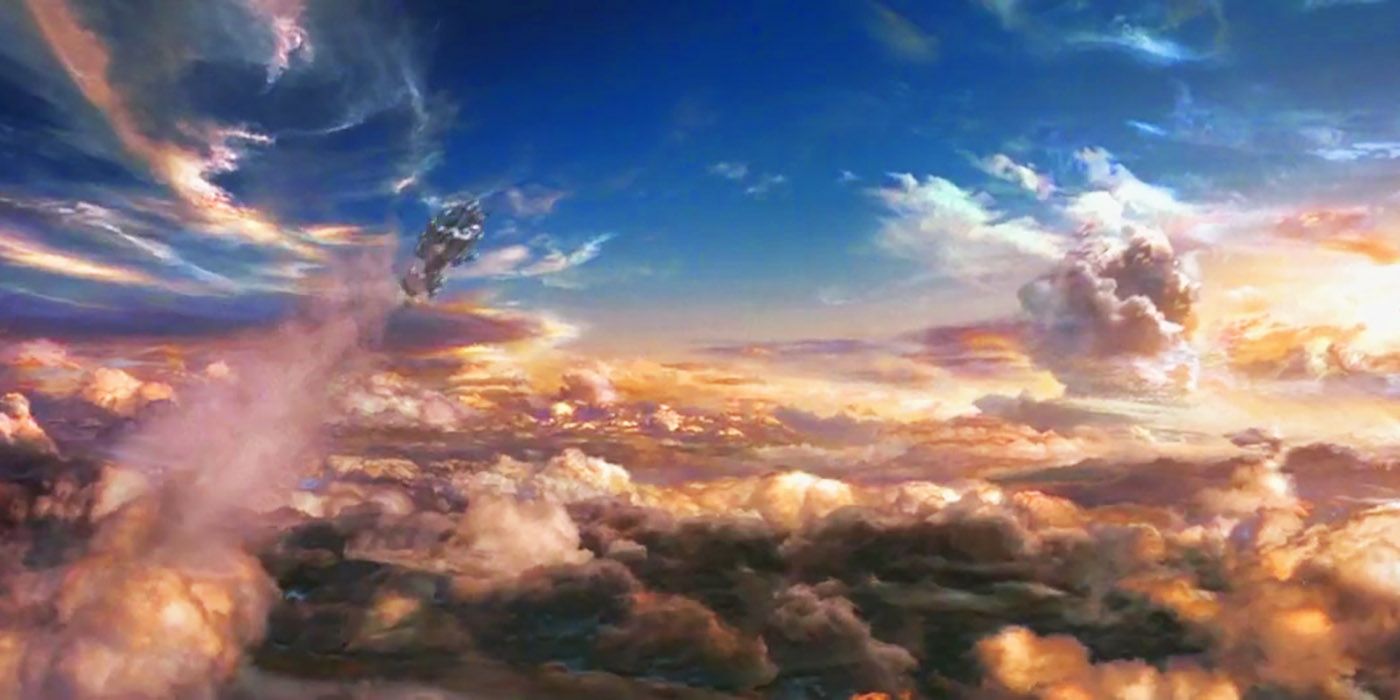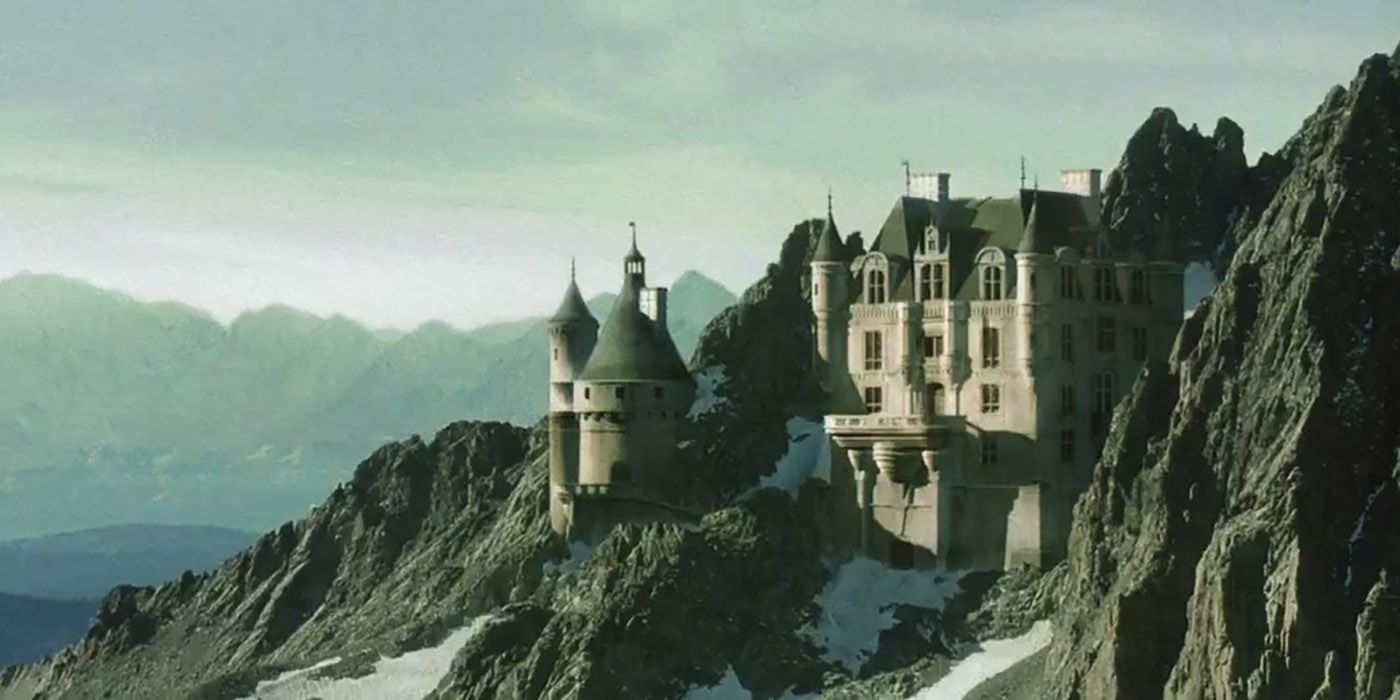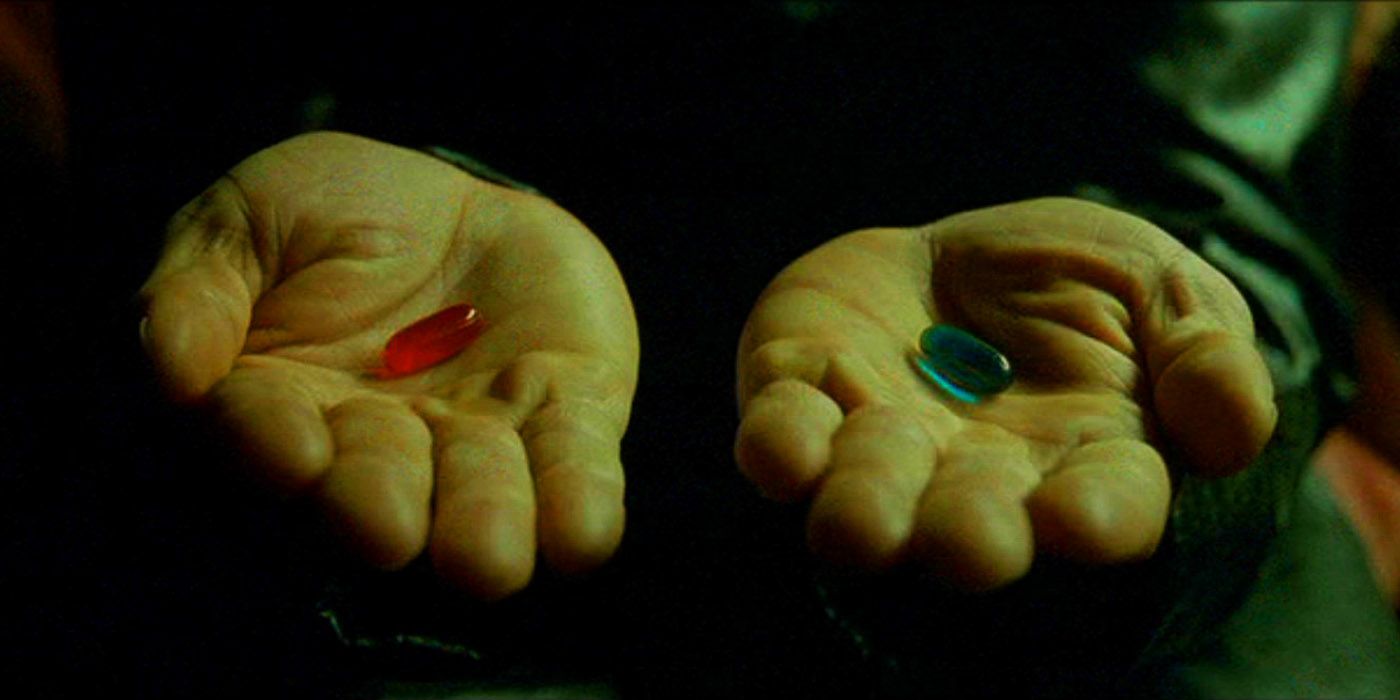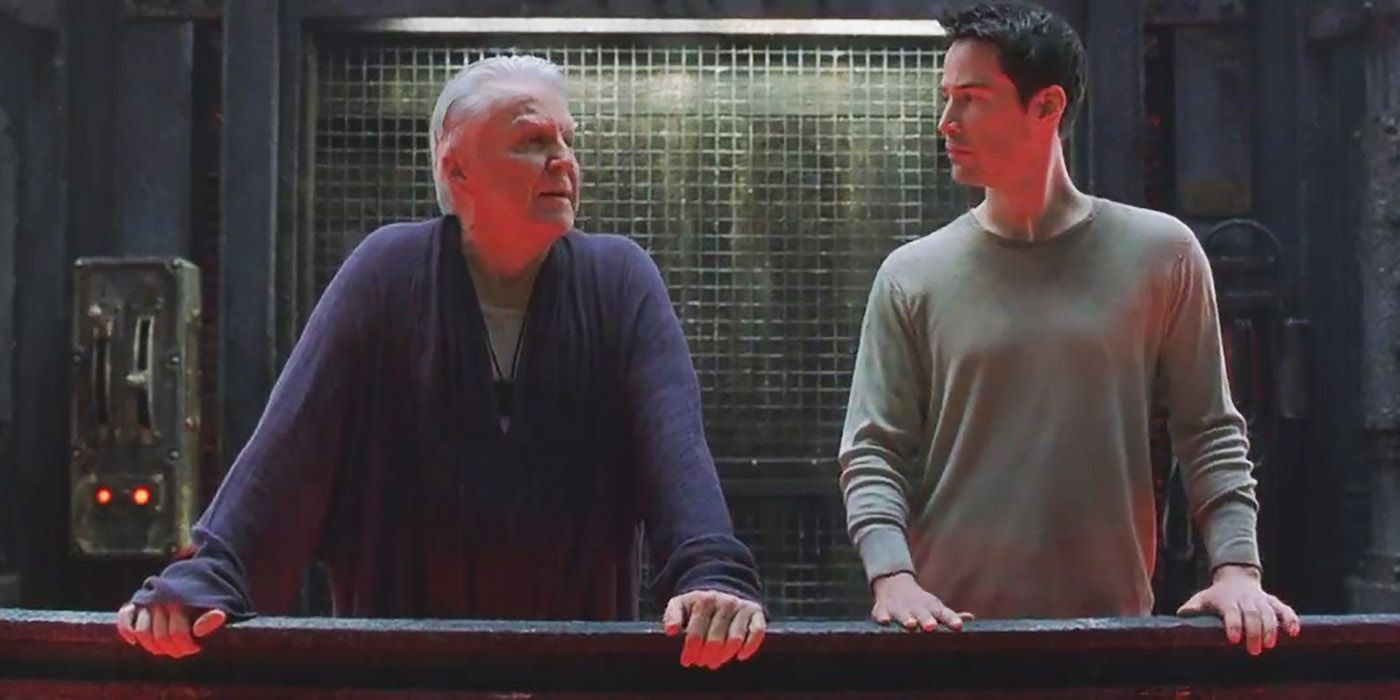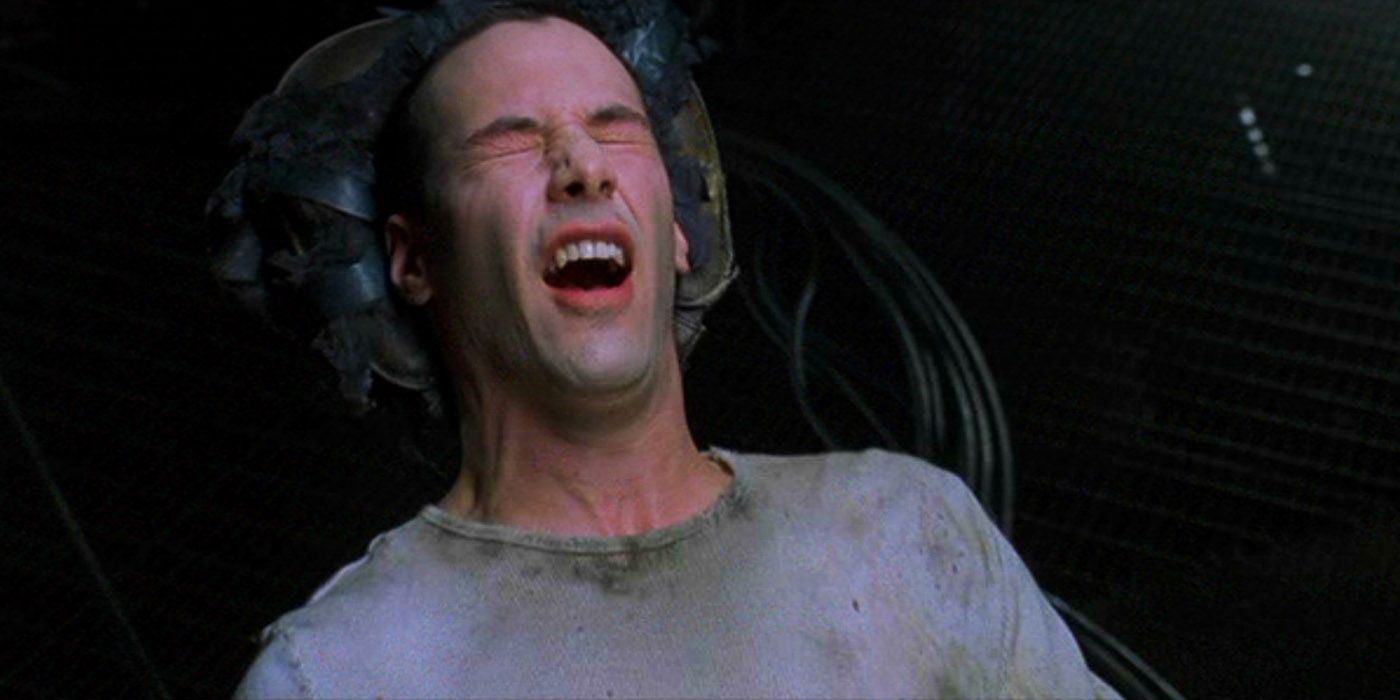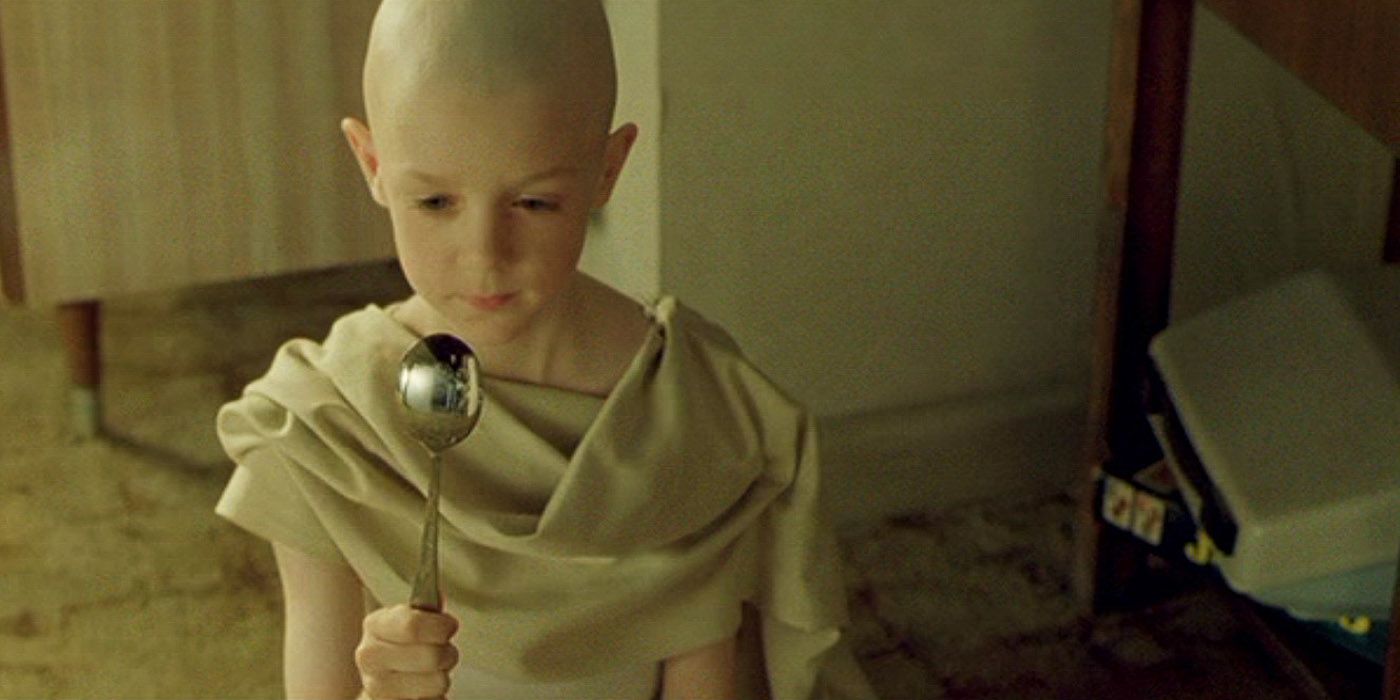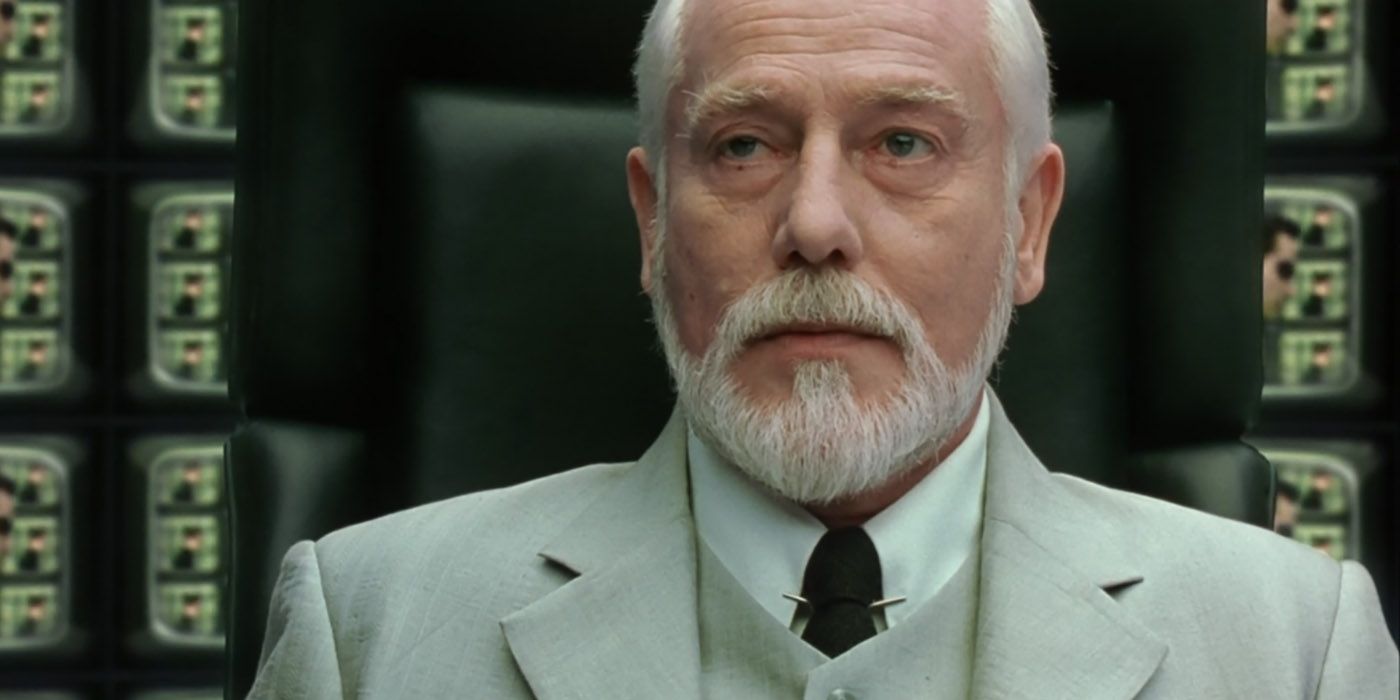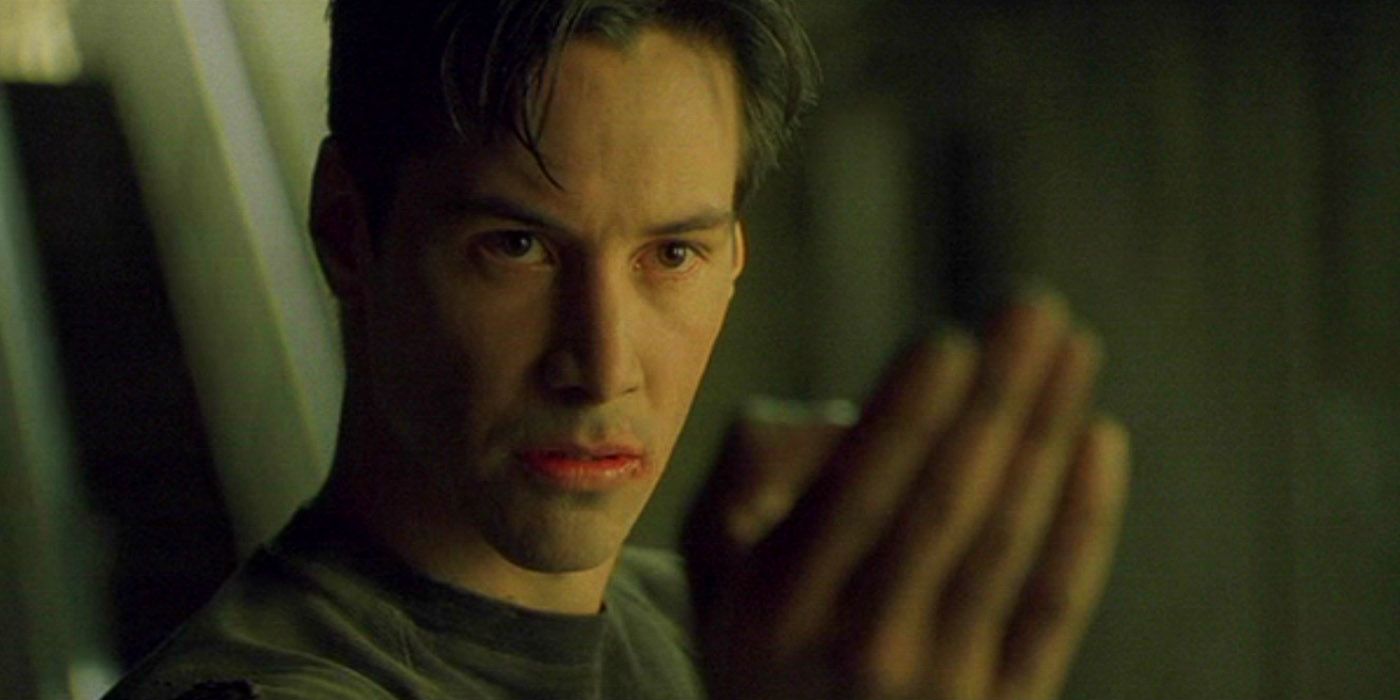The Matrix trilogy may have been Neo's story, but his death doesn't have to mean that there are no more stories to tell in that universe. Recent media reports suggest that Warner Bros. is considering revisiting The Matrix, possibly even building a connected cinematic universe out of it, with Michael B. Jordan rumored to star.
As ideas go, it's not a bad one. (It's certainly better than rebooting the series.) From wide open frontiers like virtual reality and artificial intelligence to complex statements about purpose and control, this universe has it all. The artificial world is a place where anything can happen, and the real world is a fascinatingly alien landscape worthy of exploration.
Be it prequels set before the events of the trilogy, side stories during the three existing movies, or tales set after the human/machine war ended, there's so much territory left to mine in The Matrix. Here are 15 things we want to see if a Matrix cinematic universe comes to fruition.
15. What happens next?
The Matrix lived on past the events of Revolutions, some of which was explored in the MMO game The Matrix Online, but its storytelling was tailored to suit the needs of an ongoing game world. In cinematic terms, it was unsatisfying.
Neo, Trinity, and Agent Smith are dead. But that still leaves plenty who lived on, including Morpheus, the Oracle, Link, Niobe, the Merovingian, Seraph, and so on. What became of them in the time of truce after Neo's sacrifice? Did the peace last, or was the war reignited?
There have to be more stories to tell within the new status quo created at the end of the trilogy. Does the system reboot at the end mean that everyone in the Matrix now knows the truth about their existence? Imagine what that would be like: billions of humans plugged into a virtual world — and they know.
At the end of The Matrix Revolutions, the Oracle said Neo might return some day. Keanu Reeves may be aging out of the role, but there's no reason a being as powerful as Neo couldn't return in another form, or "shell" as the machines call it.
14. The Machine War
In The Animatrix, the history of the war between man and machine was explored in broad strokes, running down the major events that led to the current state of the world. Let's experience this history in story form, from the personal perspective of a pair of characters — one on each side of the conflict, both of whom are sympathetic and worth rooting for.
The story should cover the first machines to achieve self-awareness, the founding of the machine city "01," the increasingly desperate human side of the conflict as the machines' forces become overwhelming, the burning of the sky, and finally, the surrender of the human race to the machines and the birth of the Matrix.
The Animatrix said that there were humans who sided with the machines during the war, sympathetic to the oppression they'd suffered and wanting them to achieve equal rights. It was these humans who voluntarily became the first power sources for the machines after the sky was scorched. A story from their perspective could be compelling.
13. Early Matrixes & Other "Ones"
The math on this is a little complicated, but here it is in layman's terms: the current Matrix is actually the third Matrix to exist. As explained by the Architect, his first two attempts were total failures, but the third time proved to be the charm. Yet even though it was successful, it resulted in the "systemic anomaly" known as the One, which had to be reintegrated into the system at regular intervals (probably a few hundred years apart). This reintegration had happened five times prior to Neo's emergence.
So there were five Ones before Neo, each of which chose to cooperate with the Architect, allowing the Matrix to be rebooted, restoring the system to factory settings, so to speak. Zion was obliterated and rebuilt five times. Who were these other Ones? Why did they not fight back against the Architect, as Neo did?
And what about those other two Matrixes that preceded this one? One was described as idyllic, the other full of horrors based on human history and mythology. Both failed because they didn't ring true enough for mankind to swallow. It could be interesting to get a look at what they were like.
12. The Oracle
There is no one in the Matrix universe more mysterious than the Oracle. She may not require an entire movie devoted to her alone, but her origins and history are well worth exploring.
We know she's a sentient program made to "interpret certain aspects of the human psyche," and that she gave the Architect the idea for how to get the human population to accept the false reality of the Matrix. And obviously, she has a long, winding history with the Architect. It'd be interesting to see more of their yin/yang relationship.
How did a program that understands how humans think become capable of seeing the future? It could be argued that her understanding of humanity grew so acute that she became able to predict human actions intuitively. But her predictive abilities were far too specific for that. For example, she knew Neo was going to knock over a vase seconds before he did it.
Let's watch her from her beginnings as an intuitive program until she became an oracle. Casting wouldn't be an issue. It's already established that she can change her "shell" when needed, so she's probably done it many times over the years.
11. Morpheus and the Prophecy
Several facts have been established about Morpheus' past from the films and one of the in-canon comic books. Having been plucked from the Matrix as a child and raised in Zion, he worked for Zion's defense for years in unspecified roles, earned the captaincy of his own hovercraft, and somewhere in that time, he fell in love with Niobe.
The day he met the Oracle was the day that changed his life forever. The Oracle told him the Prophecy of the One, the man who would emerge within the Matrix and bring an end to the war. She also told Morpheus that he would herald the One's coming, because he would have the honor of identifying the One. According to Trinity, that was when "everything changed," and when he and Niobe split.
Those are important milestones, but there are still years of Morpheus' life unaccounted for. A more thorough accounting of his rise within Zion's ranks and his encounter with the Oracle would make for a nice-and-tidy character arc.
10. Machine Culture
As the Machines became self-aware and took control of Earth, they began to develop the unique personalities they displayed in the films. Agent Smith came to hate humanity, the Oracle grew compassionate toward them, the Merovingian became arrogant in his lust for power, and so on. So how did machines who despised human beings become so much like them?
Some "expanded universe" materials have examined bits of this. The Matrix Online video game, for example, explained that there were once programs called Seraphim (of which Seraph used to be one) who were early security programs, precursors to Agents.
What else don't we know about the hierarchy of the machine world? The Matrix Reloaded said that the Merovingian and his cronies were leftovers from previous versions of the Matrix. How did they survive? Programs seem to exist only as long as they have a function to fulfill; yet The Matrix Revolutions introduced a couple who reproduced, creating a program of their own out of love, for no specific purpose. How is that possible within a regulated system?
9. The Real World
Ever wonder what else still exists on Earth besides Zion and the machine city, 01? There's got to be more. The movies established that there are underground tunnels and that most if not all of the surface world is now just charred rubble. But a planet is an incredibly big place with room for plenty of hidden secrets.
How can the machines be certain that they rounded up 100% of Earth's human population? Think about how difficult that would be, all the ways there are to hide, to evade capture, to never stay in one place. We're talking about billions of people, with no exact census of how many there are at any one time. Surely there are some tiny pockets of humanity out there that have managed to remain hidden. Maybe they're holed up in some far-flung ruins, or hiding deep underground like Zion.
And what about wildlife? Losing the sun would be enough to cause many of the planet's animals to die off. But what if someone was maintaining a sanctuary for surviving fauna on a remote island that the machines never found? Speaking of the sun, with the machines and humans now at peace, maybe they could work together to destroy the nanobot clouds and bring back the day. Why not explore more of 01 and Zion, too? Just leave out the orgy dance raves this time.
8. Space
The Matrix up until now has concerned itself entirely with the world beneath the burned sky, and the virtual world that exists within it. Never once has the trilogy or any expanded universe materials considered what might be lurking up beyond those black clouds.
Consider that according to established mythology, the Machine War takes place somewhere between 100 and 150 years from now. Today, we have astronauts in space 24/7/365 aboard the International Space Station. Imagine what we'll have by the mid-22nd Century. Multiple space stations? A moon colony? Space tourism? Expeditions to Mars? Space could be home to hundreds of people by then.
When mankind cut off sunlight from the surface, communications beyond the black clouds probably went dark. So anyone in space at the time would have been warned to stay away from Earth for their own safety, and to preserve some remnant of the human race. Or maybe the machines sent expeditions into space to find those humans. What became of them?
7. More of the Matrix
It's said that the majority of humans hardwired to the Matrix live in the virtual "Mega-City", where most of the movies' action takes place. But there were hints that there's more to the Matrix than that one city, such as Morpheus' wanted posters near the beginning of the first movie, mentioning him having been spotted at Heathrow Airport in London.
There's nothing to say that there couldn't be more to the world of the Matrix, and Reloaded confirmed that there were back doors and a certain mountain chalet. What if the Matrix is an Earth-sized simulation? It would have to be bigger than one city to house the consciousnesses of all mankind.
So what else is out there? Are there other cities, other continents? Are tribal cultures allowed to exist in familiar (virtual) environments? Where do kids "go off" to college? Are there oceans, islands, ships, aircraft? Just how deep is that rabbit hole, anyway?
6. Matrix in a Matrix
A popular fan theory states that the "real world" in the movies — the ruined, desolate "desert of the real" surface of Earth — is itself another Matrix atop the one we know about. The idea is that those ever-deceptive machines layered yet another form of control over mankind.
That would mean that Zion is no more real than the Matrix's Mega-City, and that everyone supposedly "free" of the Matrix is still plugged in somewhere in the true real world. It could also mean that the actual real world may not be a wasteland at all; it could still be in good condition, if the machines were able to gain control before the sky was torched, that is.
Granted, this theory is highly unlikely, and if it were ever used, it would be a retcon that many would revile. But there's no denying that it raises fascinating questions about what's reality versus what's virtual. How could one know what's really real and not a simulation, if you can't tell the difference?
5. Ease up on the Philosophy Lectures
The Matrix expertly wove together philosophy, religion, technology, and loads more into a tasty concoction that was as entertaining as it was thought-provoking. Audiences were dazzled by those eye-popping fight scenes, while simultaneously pondering things like fate, reality, and purpose.
Then Reloaded and Revolutions came along, and all that subtlety and nuance was nowhere to be found. Instead of communicating complex ideas through story, we got extended scenes where the action and drama stopped cold so two or more characters could have clunky conversations about control, causality, and choice.
What caused this change is anybody's guess, but if this cinematic universe wants to have legs, it's essential to get back to the sensibilities of the original film. That movie proved that action, drama, and cerebral meditation don't have to be mutually exclusive. Entertain us while engaging the brain cells at the same time; don't make us sit through lengthy orations that are better saved for college philosophy classes.
4. Programmable Humans
There are so many ideas packed into the Matrix films, and many of them have been explored in fascinating ways. One that was captivating but got very little screen time came from the sequence in the first film where Neo receives training in martial arts via direct data upload. Thanks to the hole in the back of his head — by which he'd previously been plugged into the Matrix — Neo was able to master multiple fighting styles in a matter of hours. Trinity later receives a similar upload that allows her to expertly pilot a military-grade helicopter.
It begs the question: exactly what kinds of things can be uploaded to a human brain? Skills, obviously, but what else? Cypher's request to not remember anything from his time outside the Matrix after he's reinserted suggests that memories can be completely rewritten, as well as occupational skills. That's a terrifying notion if you believe that we are the sum of our experiences.
Could a direct interface actually change a person on a fundamental level? Can personalities be altered? Opinions? Beliefs? Or is "who we are" something that can't be dictated?
3. The Other Potentials
A scene midway through The Matrix has Neo waiting to meet the Oracle in a room full of kids. These kids are referred to as "the other potentials," which implies that Neo was not the only person that could have turned out to be the One.
Reading between the lines, it can also be inferred that Morpheus and his crew had spent a long time looking for the One. It follows then that there must have been others that Morpheus sought out before he found Neo, believing that they could be the One. Who were these potentials? Were they kids like the Oracle's friends, or adults like Neo? Did they take the blue pill and choose to stay inside the Matrix?
Or could there be another explanation... What if the other members of Morpheus' crew were folks who Morpheus once suspected of fulfilling the prophecy? Trinity, Cypher, Apoc, Switch, and Mouse: might Morpheus have thought at various times that any or all of them could be the One?
2. Dial Down the Cryptic
The Architect scene. Need we say more?
The bottom line of all that gobbledygook was that the One and his "salvation of Zion" had happened before, and it was just another deception, another form of control from the machines. It was a cycle that was on its sixth iteration, with Zion having been destroyed and the Matrix rebooted five times across hundreds and hundreds of years. But if you managed to get all of that from this convoluted scene, you're smarter than most, because it had to be one of the most labyrinthine conversations ever committed to film.
There were other bits that were confusing too, like Neo's second conversation with the Oracle. Parts of our heroes' initial meeting with the Merovingian were rather dense, as well. And Smith's mini-lecture to Neo about purpose before their city park brawl was as obtuse as it gets.
There's nothing wrong with going deep. But communicate it in a natural way, not like the world's most pretentious college thesis.
1. New Creative Team
We've got nothing but mad props to the Wachowskis and what they created and accomplished. The Matrix is a work of cinematic genius that will stand for generations. Even the sequels, for all their narrative shortcomings, had some brilliantly innovative sequences and ideas.
But the clumsiness with which the sequels were executed suggest that maybe it's time to let someone else have a go. Imagine what someone like Guillermo del Toro or James Gunn or Luc Besson could do with the franchise. Would newcomers honor the past while introducing new ideas and sensibilities? Of course. Would it be cool? Who knows. But don't you want to find out?
Look what happened to Star Wars when someone other than George Lucas was at the helm. After Lucas' snoozer prequels, we got the thrilling Force Awakens and the brilliant Rogue One. On the other hand, there's the well-documented Terminator saga, which pretty much went to pot as soon as James Cameron exited.
Handing off the baton is a gamble, but it's one worth taking if the franchise is to flourish.
--
What do you want to see in The Matrix revival? Would you rather see a prequel, a sequel, or an outright reboot? Let us know in the comments.

